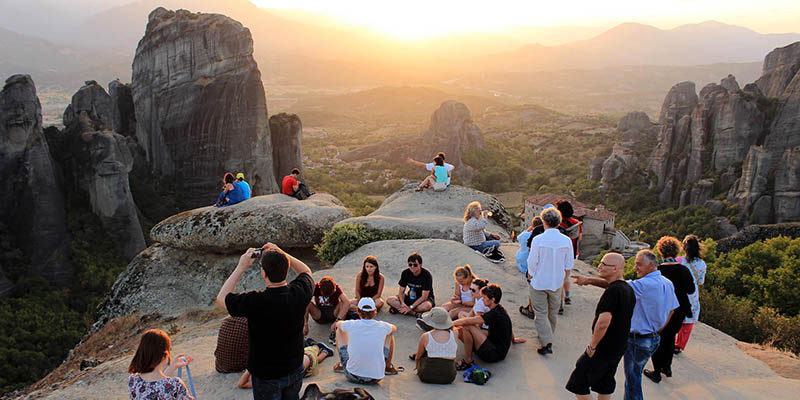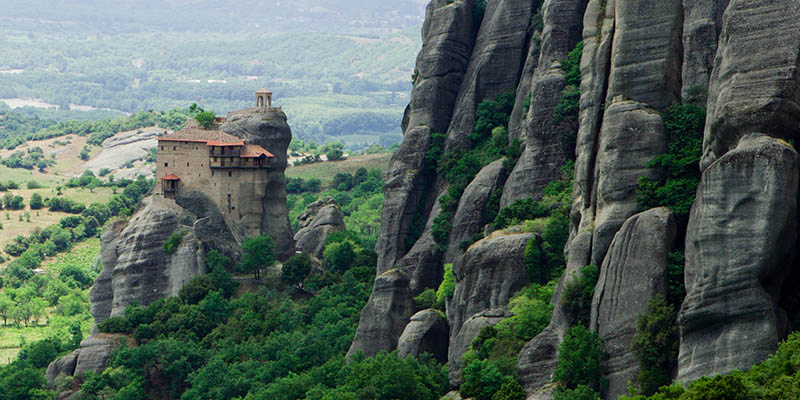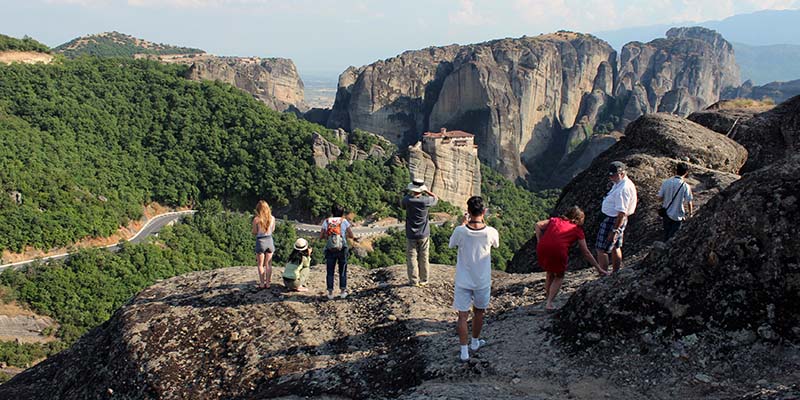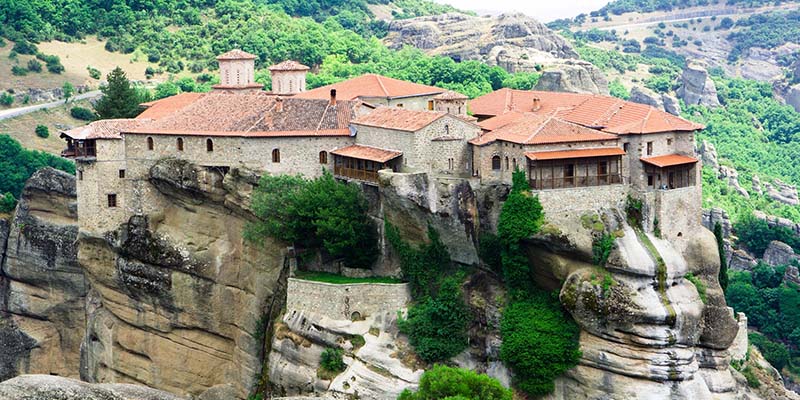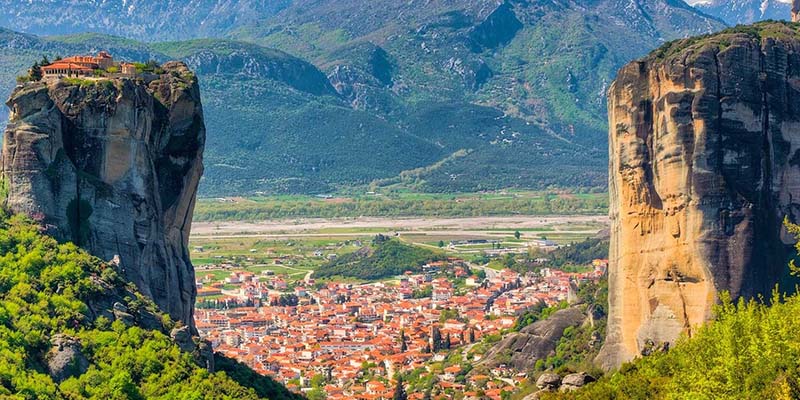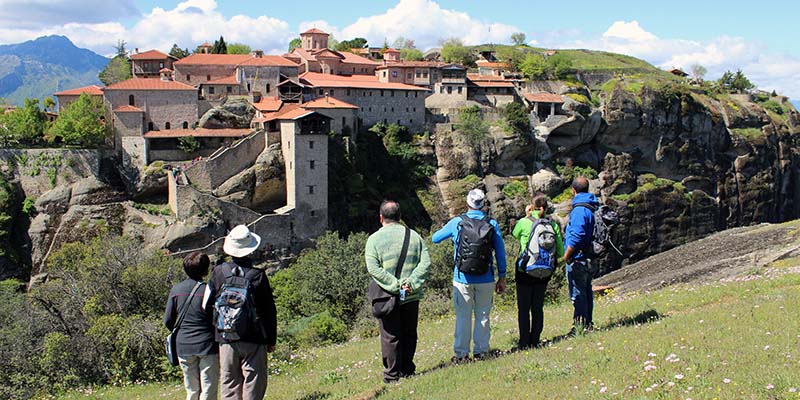The Metéora, literally means “Suspended in the Air” and is one of the largest and most important complexes of Greek Orthodox monasteries in Greece, second only to Mount Athos. The six monasteries are built precariously perched on top of natural sandstone rock pillars, at the northwestern edge of the Plain of Thessaly near the Pineios River and Pindus Mountains, in central Greece. So difficult was access in the past that both goods and the monks were winched up to the monasteries in large wicker baskets.
The nearest town is Kalambaka. Metéora is included on the UNESCO World Heritage List. In 2012 Greek archaeologists unearthed northeast of Amphipolis at a location called the Kasta Hill, a vast tomb, the biggest burial tomb ever unearthed in Greece. The perimeter is 497 meters long, and is made of limestone covered with marble. Three sections have been revealed by the excavation, each enclosed by a stone wall. There are two sphinxes just outside the entrance to the tomb. Two of the columns supporting the roof in the first section are in the form of Caryatids, apparently mimicking the style of the fourth century BC. The large size of the tomb indicates the importance of the burial made there. The identity of the burial remains unknown, since the excavation is still going on.

